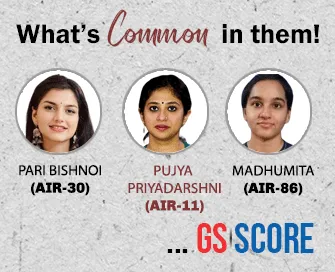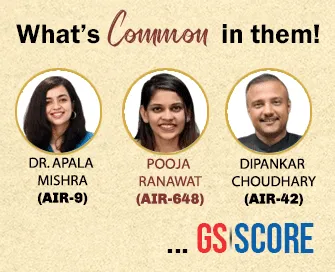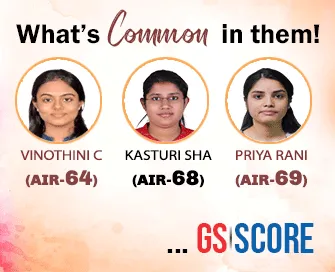

25th July 2025 (13 Topics)
Mains Issues
Context
Union Home and Cooperation Minister Shri Amit Shah unveiled the National Cooperation Policy 2025 in New Delhi.
Unveiling of the National Cooperation Policy 2025 and its Vision for ‘Sahkar Se Samriddhi’
- Background and Evolution of Cooperation Policy
- The first National Cooperation Policy was introduced in 2002 under the leadership of Prime Minister Atal Bihari Vajpayee.
- In 2021, the Ministry of Cooperation was established under the Modi government to revamp and strengthen the cooperative ecosystem.
- A 40-member high-level committee, led by Shri Suresh Prabhu, formulated the 2025 policy after extensive consultations with over 750 stakeholders, RBI, and NABARD.
- Vision, Mission, and Objectives
Vision:
- “To achieve Viksit Bharat @2047 through Sahkar Se Samriddhi (Prosperity through Cooperation).”
Mission:
- To build a network of professional, transparent, self-reliant, and digitally-enabled cooperative institutions across rural and urban India.
Key Objectives:
- Triple the contribution of the cooperative sector to GDP by 2034.
- Ensure one cooperative unit per Panchayat (PACS, Dairy, Fisheries, etc.).
- Target inclusion of 50 crore people into the cooperative movement.
- Increase total number of cooperative societies by 30% (from 8.3 lakh existing).
- Structural Pillars of the Policy
- Strengthening Institutional Foundations:
- Legal and regulatory reforms, model by-laws, capacity building, and credit access.
- Enhancing Inclusivity & Expanding Reach:
- Focus on Dalits, tribals, women, and youth participation.
- Five Model Cooperative Villages per tehsil.
- Technology & Transparency:
- Digitalization of PACS.
- Cluster-based management & monitoring system.
- Diversification into Emerging Sectors:
- Cooperative participation in green energy, insurance, taxi services, etc.
- Launch of ‘Sahkar Taxi’ initiative and PM Jan Aushadhi Kendras via PACS.
- Global Outreach:
- Establishment of National Cooperative Export Limited (NCEL) for accessing international markets.
- Capacity Building:
- Launch of Tribhuvan Sahkari University for cooperative education and skilling.
- Socio-Economic Impacts Envisaged
- Strengthening grassroots democracy through member-centric governance.
- Integration of rural poor, women SHGs, and MSMEs into formal economy.
- Facilitating employment generation, credit delivery, and last-mile service delivery.
- Promoting environmental sustainability and local entrepreneurship.
- Challenges in Implementation
- State-level capacity to implement policy uniformly.
- Political interference and bureaucratic inertia.
- Trust deficit in existing cooperatives in certain regions.
- Integration of traditional cooperatives with new-age tech-enabled operations.
Way Forward
- Capacity Building: Train over 50 lakh cooperative workers and managers in next 5 years.
- Institutional Strengthening: Encourage audits, transparency, and accountability mechanisms.
- Legal Reforms: Uniform cooperative legislation across states to avoid federal discrepancies.
- Monitoring & Evaluation: Strong M&E framework linked to KPIs for cooperative performance.


Mains Issues
Context
The Prime Ministers of India and the United Kingdom endorsed the "India–UK Vision 2035" during a bilateral meeting in London to advance a future-oriented Comprehensive Strategic Partnership.
- Strategic Foundations of India–UK Vision 2035
- Elevates bilateral ties under the Comprehensive Strategic Partnership (established in 2021).
- Anchored in mutual growth, technological leadership, defence cooperation, and climate action.
- Vision structured around five core pillars: Growth, Technology, Defence, Climate, and Education.
- Growth and Trade Cooperation
- Comprehensive Economic and Trade Agreement (CETA)
- Boosts bilateral trade in goods and services.
- Lays the groundwork for a Bilateral Investment Treaty (BIT) and Double Contribution Convention.
- Institutional Mechanisms
- Strengthening of JETCO, Economic and Financial Dialogue (EFD), and Financial Markets Dialogue (FMD).
- Enhancing capital market connectivity and financial sector innovation.
- Sectoral Focus
- Collaboration in renewable energy, health sciences, creative industries, AI in financial services, and green finance.
- Strengthening legal cooperation, air connectivity, and WTO-centric trade reform.
- Technology and Innovation Partnership
- Science and Technology Corridors
- Launch of UK–India Research & Innovation Corridor and Joint AI Centre.
- Integration of innovation hubs, start-up ecosystems, and catapult programmes.
- Critical Technologies
- Cooperation in semiconductors, quantum tech, cybersecurity, biotech, and space technology.
- Joint actions in 6G, biofoundries, and digital public infrastructure.
- Resilient Supply Chains
- Formation of UK–India Critical Minerals Guild.
- Prioritisation of R&D, circular economy, and traceability protocols.
- Defence and Security Cooperation
- Defence Industrial Roadmap
- Launch of a 10-year Roadmap with monitoring by senior officials.
- Joint projects: Jet Engine Advanced Core Technologies (JEACT) and Electric Propulsion Capability Partnership (EPCP).
- Indo-Pacific Engagement
- Expansion of India’s role as a logistical hub in the Indian Ocean Region.
- Setting up of a Regional Maritime Security Centre of Excellence under IPOI.
- Security and Counterterrorism
- Joint condemnation of terrorism in all forms.
- Action against terror financing, radicalisation, and cross-border threats.
- Enhanced cybersecurity cooperation and migration governance under the Migration and Mobility Partnership.
- Climate and Clean Energy Partnership
- Clean Energy Initiatives
- Formation of India–UK Offshore Wind Taskforce.
- Cooperation in energy storage, nuclear decommissioning, and SMR development.
- Climate Finance and Innovation
- Leverage UK’s British International Investment (BII) and UK–India Green Investment Fund.
- Joint research in AI for climate, hydrogen, and carbon capture.
- Global Climate Engagement
- Coordination in ISA, OSOWOG, CDRI, and ZEVTC.
- Collaboration on blue carbon, early warning systems, and agroforestry.
- Educational and Cultural Exchange
- Academic Integration
- Encouraging transnational education, dual degrees, and UK university campuses in India.
- Operationalisation of India–UK Mutual Recognition of Qualifications Agreement.
- Youth and Skill Development
- Launch of Green Skills Partnership for sustainable growth.
- Enhancement of Young Professionals Scheme and Study India Programme.
Way Forward:
- Ensure time-bound delivery of action points, particularly in FTA, BIT, and climate finance.
- Strengthen public-private participation in critical sectors.
- Expand track-II diplomacy to harness academic, business, and civil society inputs.
- Enhance data-sharing protocols for cybersecurity, defence tech, and counterterrorism.
- Institutionalise diaspora engagement strategies to deepen people-to-people ties.
|
PYQ: ‘India has recently signed a free trade agreement with several countries.’ Discuss the challenges in ensuring that such agreements are mutually beneficial in the context of India's economy. (2020) |


Prelims Articles
Context
Twenty-nine artists practicing Sohrai, Pattachitra, and Patua art from Jharkhand, Odisha, and West Bengal participated in the Artists in Residence Programme (Kala Utsav 2025) at Rashtrapati Bhavan from July 14–24, 2025, and presented their artworks to President Droupadi Murmu on July 24.
Art Forms Featured:
- Sohrai Art:
- Origin: Tribal art of Jharkhand, especially among the Santhal tribe.
- Medium: Natural colours on mud walls.
- Themes: Agriculture, fertility, and domestic life.
- Pattachitra:
- Origin: Odisha (also practised in West Bengal).
- Meaning: 'Patta' (cloth) + 'Chitra' (painting).
- Themes: Jagannath cult, Vaishnavism, mythological narratives.
- Technique: Intricate detailing with natural colours on palm leaves or cloth.
- Patua Art:
- Origin: West Bengal, especially in rural districts.
- Itinerant scroll painters and singers (Patuas).
- Narrative scrolls often combined with oral storytelling.
- Subjects: Religious epics, folk tales, and even modern themes (e.g., social awareness).


Prelims Articles
Context
The Ministry of Jal Shakti released the latest status report on the National Perspective Plan (NPP) for Inter-Linking of Rivers (ILR), highlighting ongoing developments such as the Ken-Betwa Link Project and associated flood management initiatives.
National Perspective Plan (NPP):
- The NPP was formulated by the Government of India to address regional water imbalances by transferring water from surplus river basins to deficit
Executing Agency:
- The National Water Development Agency (NWDA) is entrusted with the formulation of link proposals, feasibility studies, and detailed project reports.
Structure of NPP:
- Total ILR projects identified: 30
- Divided into:
- Himalayan Component – 14 projects
- Peninsular Component – 16 projects
Ken-Betwa Link Project (KBLP):
- First ILR project under implementation
- Approved in December 2021
- Estimated cost: ?44,605 crore (at 2020–21 price level)
- Central support: ?39,317 crore
- Special Purpose Vehicle: Ken Betwa Link Project Authority (KBLPA)
- Status: Work on the Daudhan Dam, a major component, has been awarded
|
Kosi-Mechi Intra-State Link Project
About Project
Benefits:
|


Prelims Articles
Context
NCS portal has recorded over 48 lakh active employers and over 40 lakh active vacancies, marking a significant rise in digital employment facilitation.
National Career Service (NCS) Portal
About the NCS Portal:
- Launched by the Ministry of Labour and Employment in 2015, the National Career Service (NCS) portal is a mission-mode project under the e-Governance Plan aimed at transforming the national employment services digitally.
Objectives and Functions:
- It provides a wide array of career-related services such as:
- Job listings from both government and private sectors
- Skill development course information
- Vocational guidance and career counselling
- Details on online and offline job fairs
- Job matching and search functionalities
Key Statistics as of July 2025:
- Active Employers: Over 48 lakh
- Active Vacancies: Over 40 lakh
- New Employers Registered in FY 2024–25: Over 17 lakh
- New Jobseekers Registered in FY 2024–25: Over 1.45 crore


Prelims Articles
Context
The Government of India has released ?545.35 crore under PMKSY-HKKP for restoring irrigation potential and water storage, and continues implementation of DRIP Phase II & III for dam safety.
Scheme Overview:
- The Repair, Renovation, and Restoration (RRR) of Water Bodies is a component under PMKSY–Har Khet Ko Pani (HKKP). It aims to improve irrigation efficiency by rejuvenating defunct or underutilised water bodies.
Key Interventions Covered:
- Desilting, repairing conveyance systems, bund strengthening, weir/sluice repairs, catchment treatment, soil erosion control, and command area development are eligible for Central Assistance.
Externally Aided Scheme – DRIP (Phase II & III):
- Implemented to enhance dam safety and operational efficiency.
- Includes rehabilitation, emergency action planning, and institutional strengthening.
- Provision for need-based de-siltation exists, although no separate fund is earmarked for it.
- Funded jointly by World Bank and Asian Infrastructure Investment Bank (AIIB).
- Targets 19 States and 3 Central Agencies.
- Scheme timeline extends until March 2031.
Significance in Climate Adaptation and Water Security:
These schemes contribute to drought resilience, reduce dependency on groundwater, and align with India’s Jal Shakti Abhiyan and water-use efficiency targets under SDG 6.

Prelims Articles
Context
India and the United Kingdom signed the Comprehensive Economic and Trade Agreement (CETA), marking a new phase of bilateral economic partnership.
Nature of the Agreement:
- CETA is a Free Trade Agreement (FTA) signed between India and the UK, covering goods, services, investments, and mobility.
- This marks India’s first major FTA with a G7 country since Brexit, and signals India’s growing engagement with developed economies.
Key Provisions in Goods Trade:
- Zero-duty access on 99% of tariff lines, covering nearly 100% of the trade value of Indian exports to the UK.
- Major beneficiary sectors: textiles, leather, footwear, gems and jewellery, marine products, toys, and auto components.
Global Talent Mobility and Social Security:
- Double Contribution Convention (DCC): Indian workers in the UK (for up to 3 years) and their employers are exempted from social security contributions, enhancing Indian firms' cost competitiveness
- Facilitates intra-corporate transferees, business visitors, and skilled labour movement.
Trade Objectives and Vision:
- The agreement supports India’s aim to double bilateral trade with the UK (USD 56 billion currently) by 2030.
- Strengthens the Make in India, Skill India, and Startup India missions through export-linked job creation and MSME empowerment.
- Reinforces India’s position in global value chains by ensuring inclusive trade with a focus on women, youth entrepreneurs, and artisans.


Prelims Articles
Context
Shri Nitin Gupta has assumed the charge of Chairperson, National Financial Reporting Authority (NFRA)
National Financial Reporting Authority (NFRA)
- Statutory body established under Section 132 of the Companies Act, 2013.
- Regulates the auditing profession and accounting standards in India.
- Aims to ensure high-quality, transparent, and fair financial reporting.
Composition:
- Chairperson + up to 15 members appointed by the Central Government.
- Members must have expertise in accountancy, auditing, finance, or law, and declare no conflict of interest.
- Members cannot be associated with audit firms during tenure and for 2 years post-tenure.
Functions:
- Recommend accounting/auditing standards.
- Monitor compliance with standards.
- Oversee and improve audit quality.
Powers:
- Can investigate misconduct of Chartered Accountants (CAs) and audit firms.
- Has powers of a civil court under CPC, 1908.
- Can impose penalties/punishments; orders appealable to Appellate Authority.
Jurisdiction:
- Listed companies, large unlisted public companies.
- Others as referred by the Central Government in public interest.


Prelims Articles
Context
Union Environment Minister addressed the 15th Ramsar COP at Victoria Falls, Zimbabwe, highlighting India’s achievements in wetlands conservation.
Ramsar Convention on Wetlands
- The Ramsar Convention on Wetlands, 1971, is an intergovernmental treaty for the conservation and wise use of wetlands.
- India is a contracting party and has 91 Ramsar Sites (as of July 2025), the largest network in Asia, covering 1.36 million hectares.
- The network expanded by 250% over the past decade, and Indore and Udaipur are now accredited as Wetland Cities.
- Under Mission Sahbhagita and the Save Wetlands Campaign, over 2 million citizens have been mobilised; over 170,000 wetlands ground-truthed and 100,000 demarcated.
- Wetlands conservation is integrated into national policy via the National Biodiversity Action Plan, Wildlife Action Plan, and Mission LiFE.
- India’s participation aligns with global initiatives like UNEA Resolution 6/8 (sustainable lifestyles), ISA, IBCA, and CDRI.
- The Ramsar COP15 involves 172 Contracting Parties, aiming to set the agenda for the next triennium and address ecological concerns.


Prelims Articles
Context
A 24-year-long coral reef monitoring study in Lakshadweep reveals a nearly 50% decline in coral cover since 1998, linked to repeated marine heatwaves intensified by climate change.
Location and Scope of Study:
- The study, conducted by the Nature Conservation Foundation (NCF), monitored coral reefs at three atolls—Agatti, Kadmat, and Kavaratti—in the Lakshadweep archipelago over 24 years (1998–2022).
Decline in Coral Cover:
- Coral cover declined from 24% in 1998 to 19.6% by 2022, marking an approximate 50% reduction.
- The key driver of this decline is recurring marine heatwaves, especially those associated with El Niño–Southern Oscillation (ENSO) events in 1998, 2010, and 2016.
Bleaching and Recovery Patterns:
- While coral mortality has decreased with each successive event, the rate of post-bleaching recovery has also diminished, indicating long-term stress accumulation.
- The study highlights that a six-year bleaching-free period is critical for meaningful recovery.
Local Environmental Filtering:
- Reef resilience was influenced by site-specific environmental factors, such as depth and wave exposure, implying that not all reef systems respond identically to thermal stress.
- The study proposes a predictive ecological framework to identify vulnerable and potentially resilient reefs using long-term data.
Climate Change Connection:
- The frequency and intensity of marine heatwaves in the Indian Ocean have increased, in alignment with IPCC AR6 findings, placing tropical coral systems at heightened risk.
- This reaffirms India’s vulnerability to climate-induced marine ecosystem degradation, with implications for fisheries, livelihoods, and biodiversity conservation.
Global Implication and India’s Role:
- The findings gain prominence in the backdrop of India’s leadership in Ramsar Wetlands Conservation and the need for integrating coastal marine ecosystems in climate adaptation frameworks.
|
Coral Reefs:
Ecosystem Services
Threats to Coral Reefs
|


Editorials
Context
A social audit tabled in Parliament reveals systemic lapses in mechanized sanitation implementation, contributing to 150 hazardous cleaning deaths during 2022–2023.
Structural Failures in Implementation
- Contractualisation of Risk: Of the 54 deaths audited, 38 victims were employed by private contractors, while several public sector workers were informally ‘loaned’, masking employer liability.
- Gaps in Legal Compliance: Despite the 2013 Prohibition of Employment as Manual Scavengers Act and judicial directives, enforcement has been weak, with workers operating without safeguards.
- Inadequate Coverage of NAMASTE Scheme: In 2024, only ?14 crore was released under NAMASTE—insufficient to mechanise even one major city—highlighting poor financial prioritisation.
Safety, Equipment, and Capacity Deficits
- Minimal PPE Distribution: Out of 57,758 identified sanitation workers, only 16,791 received personal protective equipment, exposing a critical safety gap.
- Poor Health and Training Support: Less than 14,000 workers received health cards, and only 837 safety workshops were conducted across 4,800 Urban Local Bodies (ULBs).
- Technology Adoption Remains Uneven: While Tamil Nadu and Odisha have shown progress via robotic and mechanised desludging, such innovations remain absent in most districts.
Institutional Negligence and Social Injustice
- Weak Penal Accountability: In cases of worker deaths, police often book only junior-level supervisors or classify the incident as an accident, bypassing systemic culpability.
- Rehabilitation Gaps for Marginalised Communities: Over two-thirds of verified workers belong to Dalit communities, yet few receive meaningful rehabilitation such as housing or educational scholarships.
- Exclusion of Women and Rural Sanitation Workers: Women sanitation workers, particularly those sweeping dry latrines, receive negligible policy attention; rural sanitation workers lack any structured data or support mechanisms.
Practice Question:
“Despite legislative safeguards and technological alternatives, hazardous manual sanitation persists in India. Critically examine the institutional and structural barriers to mechanisation of sanitation work. Also suggest a robust policy roadmap.” (250 words)


Editorials
Context
As the ECI nears the completion of the first phase of its Special Intensive Revision in Bihar concerns have emerged over large-scale voter deletions impacting migrants and vulnerable groups.
Legal and Institutional Mismatch
- Outdated Legal Framework: The Representation of the People Act, 1950, was enacted for a sedentary, post-colonial India and does not reflect current migration dynamics, particularly in states like Bihar.
- Mismatch Between Law and Mobility: Despite nearly 450 million internal migrants in India, voter registration is still determined by rigid notions of residency rather than citizenship, structurally excluding transient workers.
- Administrative Minimalism by ECI: The Election Commission of India has adhered to procedural formalism rather than adopting an inclusive, proactive approach in accommodating migrant voters within the existing legal limits.
Ground-Level Disenfranchisement in Bihar
- Massive Voter Deletions: In 2025 alone, over 1.2 million names were removed from electoral rolls in Bihar, mostly in high-migration districts, disproportionately impacting the working-class poor and mobile citizens.
- Residency vs. Citizenship Confusion: Legal conflation of citizenship with residency leads to disenfranchisement of migrants, who are citizens but lack fixed addresses, making them politically invisible.
- Lack of Voter Awareness: Despite the public display of draft rolls, over 60% of Bihari voters are unaware of the claims/objections process, and this awareness is below 25% among migrant workers.
Comparative Perspective and the Way Forward
- Global Best Practices Exist: Countries like the USA, Philippines, and Australia employ absentee ballots, mobile voting units, and remote polling stations to ensure inclusion without compromising roll integrity.
- Institutional and Political Inertia: While the ECI cannot unilaterally amend laws, it must advocate for reform and innovate within its existing mandate; political parties must stop using disenfranchisement as a mobilisation tool.
- Call for Electoral Justice: Procedural integrity must not be achieved at the cost of substantive inclusion; clean electoral rolls must not translate into systematic voter exclusion, especially of economically vulnerable migrants.
Practice Question:
"The rigidity of India’s electoral laws fails to accommodate the realities of a mobile citizenry. Critically examine the impact of residency-based voter eligibility criteria on internal migrants, and suggest institutional and legislative measures to ensure universal suffrage." (250 words)


Editorials
Context
The Maharashtra government has introduced a new law invoking “Left Wing Extremism” (LWE), raising concerns over criminalising dissent and undermining democratic freedoms.
Conceptual Ambiguity of LWE
- Lack of Legal Clarity: There is no legally codified definition of Left Wing Extremism under Indian law, though the MHA lists banned groups under the Unlawful Activities (Prevention) Act (UAPA).
- Vagueness and Misuse: Broad and imprecise references to Maoist ideology allow the state to conflate dissent with extremism, enabling arbitrary and politically motivated action.
- Potential for Ideological Policing: Without a specific legal framework, the term "LWE" becomes a tool for suppressing ideological opponents rather than protecting public order.
Chilling Effect on Freedom of Expression
- Threat to Constitutional Freedoms: The proposed law undermines the right to freedom of speech and expression, protected under Article 19, by arbitrarily criminalising views perceived as extremist.
- Discretionary Powers and Arbitrary Action: The law gives sweeping powers to the police and bureaucracy to judge what constitutes ‘extremist’ speech, without procedural safeguards.
- Duplication of Existing Laws: New penal provisions overlap with existing laws addressing incitement and violence, adding confusion and enabling selective enforcement.
Broader Democratic Implications
- Weaponisation Against Civil Society: Terms like “urban Naxal” are used without legal grounding to discredit activists, journalists, and intellectuals who critique government policy.
- Muzzling of Political Opposition: By associating dissent with extremism, ruling parties can delegitimise opposition voices and stifle democratic deliberation in legislatures.
- Judicial Oversight Must Strengthen: Courts must scrutinise such laws for overreach and ensure that restrictions on expression are not arbitrary, vague, or disproportionate.
Practice Question:
“In the context of recent legislative developments invoking ‘Left Wing Extremism’, critically examine the implications for freedom of expression, dissent, and democratic accountability in India.” (250 words



